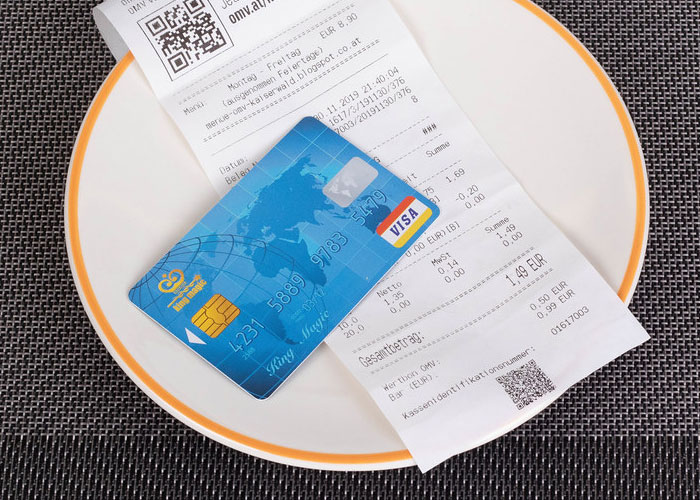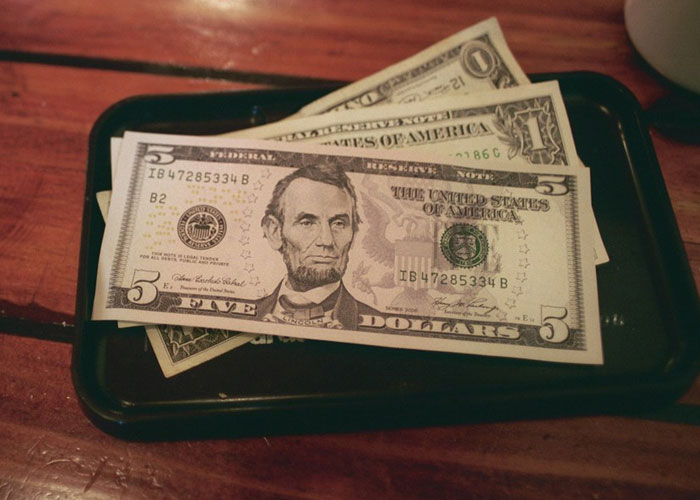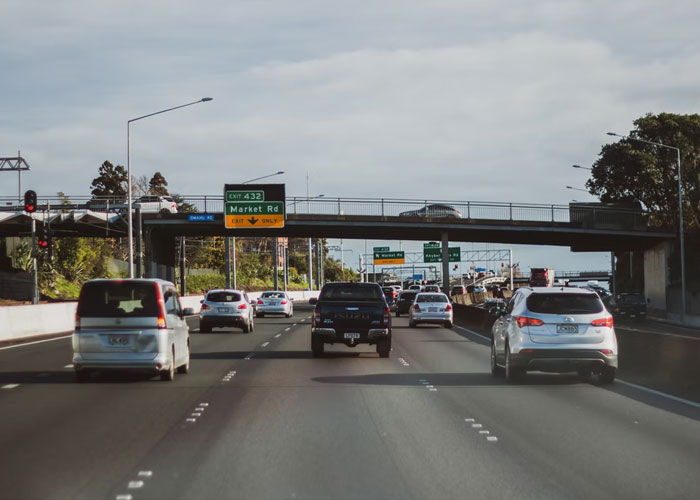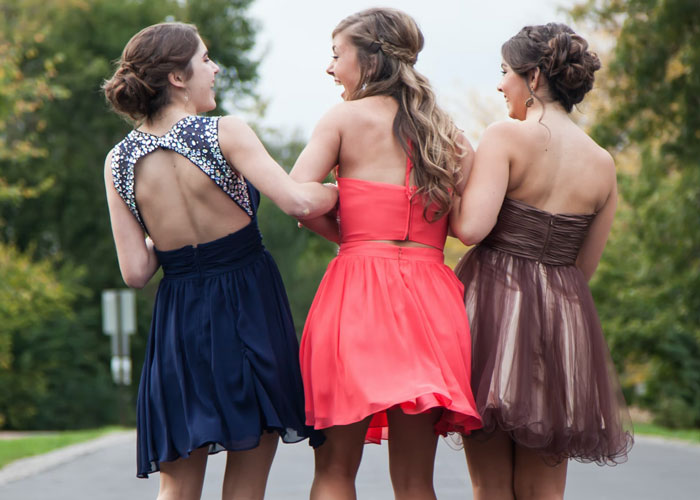
“America vs. Europe”: TikToker Makes A List Of 20 Things To Compare America And Europe
When someone moves to a new place, they discover so many new things that may lead to culture shock. Many people can’t help but compare the new environment with their old one. For example, when the expat Helene Sula moved to America, she found out various interesting things that were quite casual in America but as a European, she found them weird.
The lifestyle blogger loves to travel and has gained lots of intercultural experiences during her work-related traveling around the world. Recently she uploaded a TikTok video series comparing America and Europe. Scroll below to see 20 things she listed in the viral video with 8.5M likes.
More info: Heleneinbetween.com | Smart.bio
#1

Image source: heleneinbetween
“Paying at restaurants. Most of the time at restaurants in the US, your server will hand you a bill, take your credit card and walk to the back to charge it. In Europe, your server will charge your credit card right at the table. Also, most Nordic countries are almost all cashless, while some places like in Germany and Italy they still heavily rely on cash.
Also at American restaurants, they bring the check when they think you’re finished eating, while in Europe, that’s often considered rude and they won’t bring you the check until you ask for it.”
#2

Image source: heleneinbetween
“Tipping. In America, it’s standard to tip 15 to 20%. In Europe, tipping isn’t mandatory, but in some countries it’s a few euros or maybe 10%. Europeans are generally paid a salary to wait tables, while Americans make more money through tips.”
#3

Image source: heleneinbetween
“Driving. In America we drive nearly everywhere, even really short distances and sometimes even across the street. However, we also drive if it’s super far away. Also, Europeans tend to say a location is blank kilometers away. Well in America, we say it in hours. For example, we are 10 hours away from the beach.”
#4

Image source: heleneinbetween
“Maternity leave. In the USA there is no standard paid maternity leave, but you can get 12 weeks of unpaid leave. Whereas in Europe, there is at least 14 weeks of maternity leave, with many countries offering much more. For example, in Germany, Norway, Lithuania, Sweden and Hungary, they offer a full year or more of paid maternity leave. In Germany, you can actually take up to three years off, and it’s not just for the moms. There’s paternal leave too.”
#5

Image source: heleneinbetween
“Money. In the US, cash is all the same shape, size and color, which is green, while in Europe it comes in all different colors and sizes, which also helps people immediately understand the difference. Also some countries like Romania and the UK have plastic bills.”
#6

Image source: heleneinbetween
“In America, we drive huge vehicles. Europeans tend to drive smaller compact cars. Since European cities are more dense, the cars reflect that. While in the USA, we tend to think bigger is better and often prefer trucks and SUVs. Also, in the USA gas is typically much cheaper, but overall Europeans tend to be safer drivers than Americans.”
#7

Image source: heleneinbetween
“Whenever you meet an American,usually the first question you’re asked is: “What do you do for a living?” This doesn’t happen the same way in Europe. In the US, people are obsessed with their jobs, and usually think of this as their identity. Don’t be obsessed with your job, be obsessed with your life.”
#8

Image source: heleneinbetween
“In the US, the portion sizes are huge. You might be surprised how big the portion you’ll receive when you order a meal is. It’s also acceptable to take your leftovers home. while in some places in Europe that’s not typical. Also if you haven’t noticed, we fry everything.”
#9

Image source: heleneinbetween
“The term America. If you grew up in the US, you may think of America and the United States interchangeable. Most of the time we call the United States America and we call ourselves American. Even though there’s also the whole rest of North America and all of South America. Many people can’t understand why we refer to the US as America, and people from other countries often refer to our country as the US or the states.”
#10

Image source: heleneinbetween
“Powerlines. Driving around the USA you’ll notice power or telephone lines nearly everywhere you look. While in many places in Europe they bury the lines underground. Buried power lines are protected from the wind, ice and trees, but buried lines are more vulnerable to flooding and can still fail. Also burying them is more expensive, but it looks so much nicer.”
#11

Image source: heleneinbetween
“Americans are not direct at all. Europeans are super blunt, and they tend to tell you like it is. Whereas in America, we tend to give a compliment sandwich. So we stick a criticism in between two compliments, whereas Europeans will just tell you what they think. And they’ll tell you they don’t like something or if they do, whereas in America in the USA, we tend to not always be as direct.”
#12

Image source: heleneinbetween
“The movies are true. We really do have a lot of high school dances, although they aren’t choreographed like this. We have homecoming. And fun fact. My first date with my to be husband was homecoming. We also have Prom, and Prom King and Queen.”
#13

Image source: heleneinbetween
“Houses in America and Europe are pretty different. American homes tend to have more space between them, while in Europe, they’re more closely stacked together. Most American homes have a yard while many European homes don’t. And while many American homes are larger than the European homes, in Europe the outdoor communal spaces are very beautiful and super pedestrian friendly.”
#14

Image source: heleneinbetween
“The way we write the dates. We write the dates, Month-Day-Year. Almost everywhere else including Europe, it’s Day-Month-Year. There’s no real reason why we do it.”
#15

Image source: heleneinbetween
“Americans wear their shoes in the house – yes the same ones we walked around in all day. Many Europeans and other countries take their shoes off at home and in Germany they have special house shoes that they wear just around the house.”
#16

Image source: heleneinbetween
“Christmas lights in the USA. We go crazy for Christmas lights and over the top Christmas decorations. Even though the movies might make it look over the top, it’s totally accurate. We like to cover every square inch of our house in twinkling lights. In Europe, the city centers are often decorated and beautiful, but homes don’t usually have such over the top decorations.
One of our favorite traditions in the USA is to go Christmas light looking. We grab hot chocolate and drive around listening to Christmas music while looking at lights.”
#17

Image source: heleneinbetween
“In the US, we work a lot. On average, we only get about two weeks paid vacation. I personally had only five days off on my first job, which in Europe it varies but many countries get a month off. In the United Kingdom, France, Spain and Germany they take the lead for the most days off.”
#18

Image source: heleneinbetween
“Americans like a lot of ice in their drinks, and the rest of the world really doesn’t do this. In Europe, you have to ask for ice most of the time, and usually it’s just a couple of cubes. We like our drinks cold and we’d like to refill, please.”
#19

Image source: heleneinbetween
“The drinking age in the US is 21, which is the highest in the world. While in most European countries it’s 18, and in some countries it’s even as low as 16, if it’s enforced at all. Also beer and wine is cheaper in Europe and maybe a little better.”
#20

Image source: heleneinbetween
“Americans love small talk. Perfect strangers might ask you how you’re doing or comment on the weather. Typically the further south you get in the US the more small talk, darlin’.”













Got wisdom to pour?
#7 so what do people ask in Europe when they meet the first time? “What’s your take on dark matter?” “How many children do you have?” or perhaps “How about that weather we’re having?” Occupation is something everybody has, even van-lifers (in a sense), it tells you a lot about a person (“I carve tiny violins out of pinecones”), and it’s a hopping-off point for conversational connection.